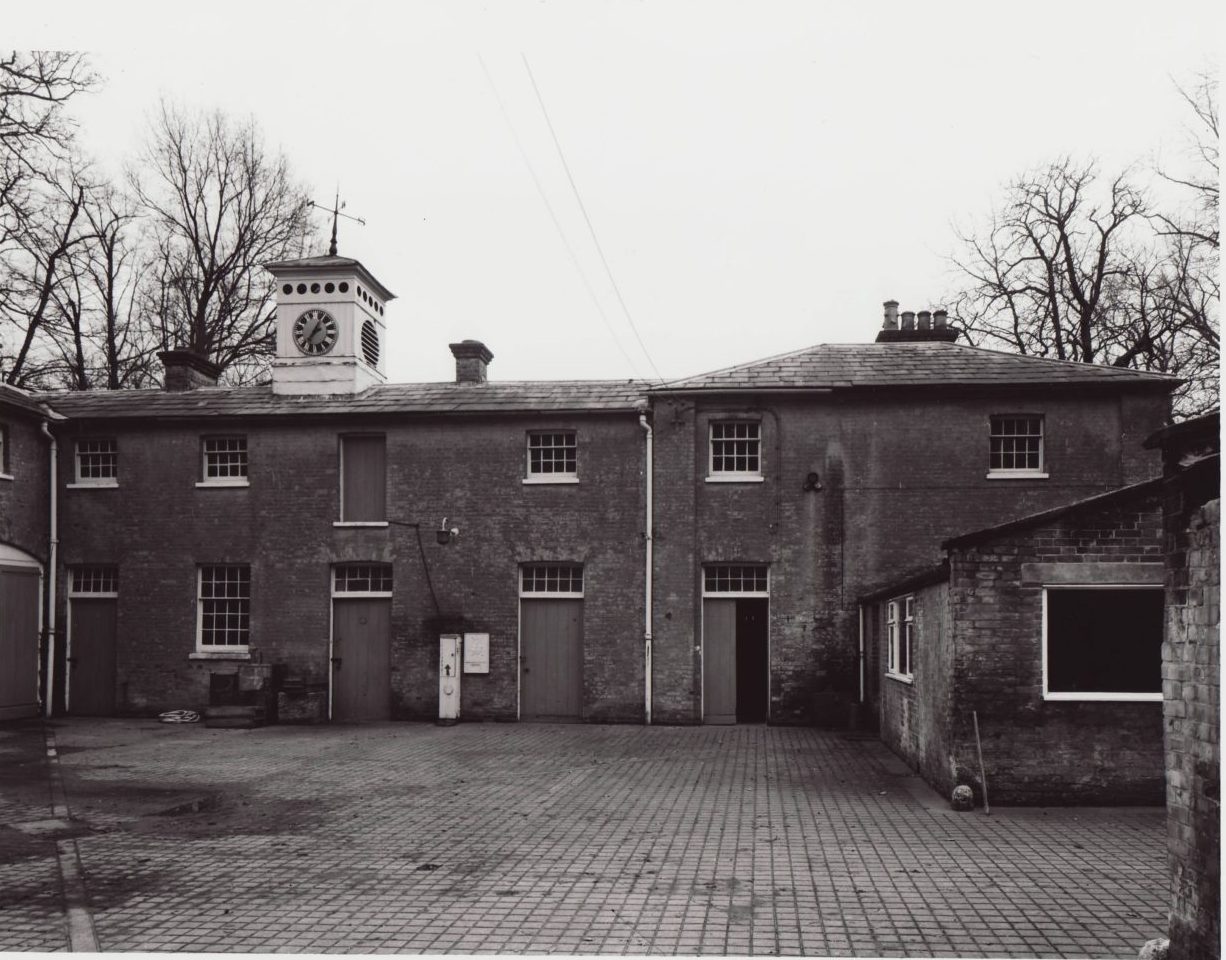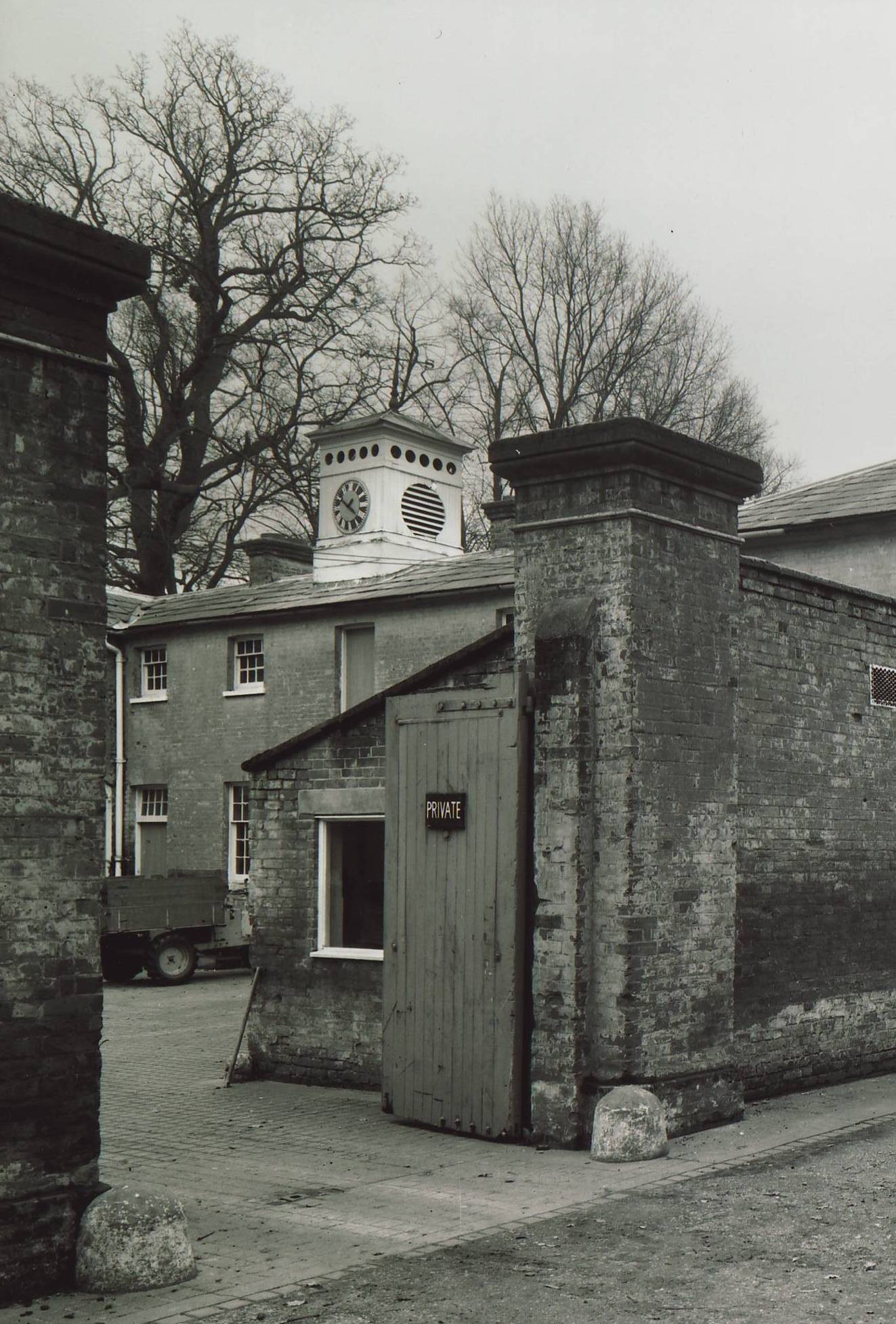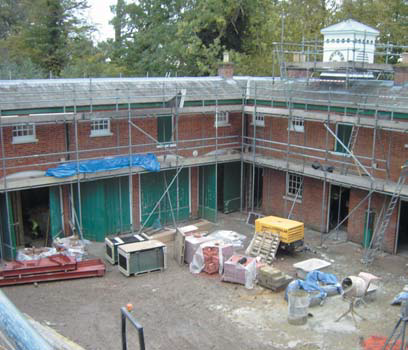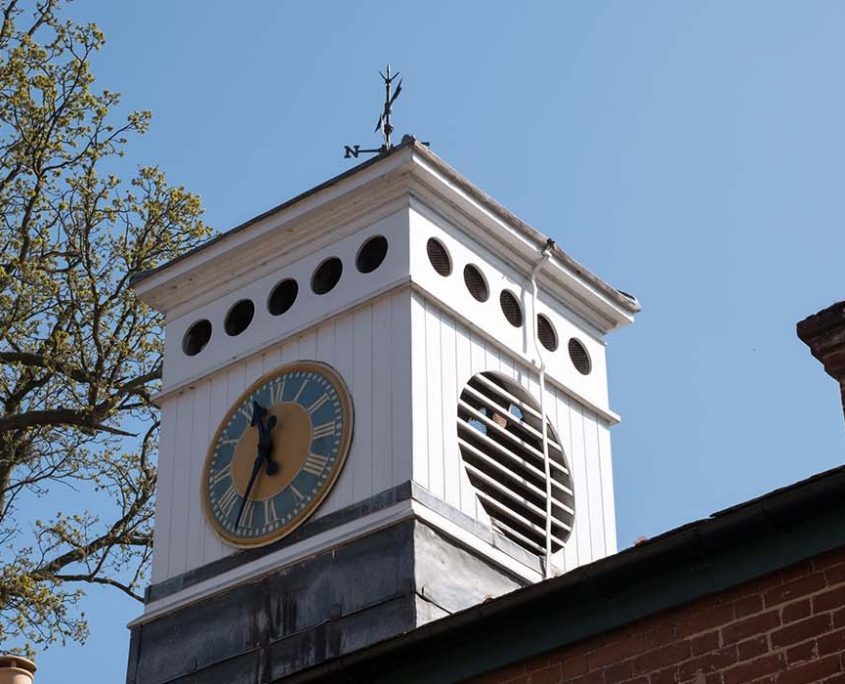The Clock Tower
The turret or stable clock has a two-train striking birdcage movement made by local clockmaker, John Richmond of Chelmsford. Richmond is recorded as working in Springfield from 1800 to 1824. No other turret clocks, signed by Richmond are known, but the turret clock in Ingatestone Hall is of a very similar construction and was probably made by him. The clock has an anchor escapement and, very unusually for a turret clock, rack striking.
Conserving the original materials of the clock was the most important consideration during the extensive restoration. Although the escape wheel and pallets were replaced due to inappropriate previous repairs, the original damaged parts are displayed alongside the clock. During the restoration of the clock movement, automatic winding was fitted to both trains of the clock dispensing with weekly manual winding.
In 2007, Chris Papworth MBHI of Kelvedon Clocks carried out the restoration work. With over 40 years experience in the repair of antique clocks and watches, Chris is a member of the British Watch & Clockmakers’ Guild and the British Horological Institute.










